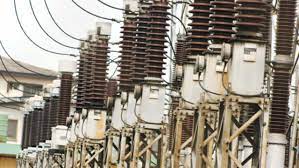The Transmission Company of Nigeria (TCN) says the current load shedding being experienced nationwide is as a result of very low power generation by the electricity generation companies (Gencos) for the TCN to wheel through the transmission grid to distribution companies nationwide.
For close to three weeks now, power consumers in various locations across the country have been complaining of incessant outages.
Reacting to the outages in a statement issued in Abuja on Tuesday, the transmission company said:“The media has been awash with reports that TCN has reduced the load allocation to distribution companies. That information is incorrect.
“The correct position is that TCN can only transmit the quantum of power generated by Gencos through the national grid to distribution load centres nationwide.
“For clarity, TCN does not generate electricity and therefore can only transport cumulative generation from all the generation companies nationwide to distribution load centres.”
It stated that the distribution companies were responsible for end-user consumption, while TCN allocated power to Discos based on approved percentage of the total generation available per hour or on day-ahead nomination.
TCN stated that currently, the cumulative generation nationwide was low and Gencos had attributed this to several factors including poor gas supply, fault in generating units, scheduled and unscheduled maintenance.
It said all of these issues had caused most power generating companies to limit their generation, and sometimes not generate at all.
“A summary of the power generating profiles in the last two months, for instance, clearly shows that 14 gas-powered generating stations were either not generating at all or had limited generation at various times within the period, further depleting the quantum of power generation available for transmission into the grid on a daily basis,” TCN stated.
It added: “Power generating stations in this category include Omotosho units 5 & 6, Olorunsogo units 3, 4 & 6, Omoku Units 3 & 6, Omotosho NIPP units 3 & 4, Delta units 15, 17, and 18, Afam VI units 11 & 12, Olorunsogo NIPP unit 3, Ihovbor NIPP unit 2, Sapele Steam unit 3, Sapele NIPP unit 1, Odukpani NIPP units 1 & 3, and Okpai units 11, 12 & 18.
“Also, within the same period, Jebba Hydro and Shiroro Power Generating Stations were either out or had limited generation, causing additional loss of 232MW from the grid.
“Other power generating plants such as Omotosho units 3&4, Olorunsogo units 1, Delta units 10 &20, Afam VI unit 13, Ihovbor NIPP units 4, Geregu NIPP units 22&23 and Odukpani NIPP units 2, 4 & 5, have also been out either on fault or for scheduled maintenance, causing a further loss of about 3,180MW from the grid.”
TCN stated that a combination of the above scenarios had persisted and the total effect on the grid was persistent low generation, which operators of the transmission company had strived to dispatch in a way that would not jeopardise the stability of the grid.
“More recently, from the 1st to 4th of March 2022, there was generation shortfall due to water management in Shiroro and Jebba hydro with the loss of 307MW and 125MW respectively from both stations,” TCN stated.
It added: “Within the same period, there were fault and technical problems in Egbin, causing 514MW shortfall and in Geregu causing 230MW shortfall, while reported fault at Alaoji NIPP reduced generation from the substation by 263MW.
“Gas constraint alone in Olorunsogo gas generating plant reduced generation from the station by 104MW. In the same vein, Omotosho gas lost 102MW and Sapele NIPP lost 263MW. In Omotosho NIPP, there was generation shortfall of 233MW and in Omoku a shortfall of 112MW.
“Two units in Okpai have limited generation due to technical problems causing a 204MW drop in generation and in Afam VI 511MW drop in generation.”
TCN stated that gas constraint and fault in Olorunsogo NIPP reduced generation by 240MW, Geregu NIPP by 435MW, and Ihovbor by 142MW.
It stated that due to gas pipeline pigging, Odukpani NIPP was shut down, which caused a reduction of generation by 575MW.
TCN said a combination of issues ranging from gas constraints, fault, and technical problems within generating plants caused persistent low generation and consequently low load allocation to distribution companies nationwide.
“This is based on the fact that TCN can only transmit what is being generated by Gencos and presently they are all generating below capacity,” the transmission company stated.
It added: “It is important to note that except cumulative power generation increases considerably for TCN to transmit to distribution companies nationwide, TCN will be left with no choice than to continue to load shed.
“We will, however, continue to work hard to ensure the efficient allocation of the total load generated by power generating stations into the grid, bearing in mind the need to ensure that the national grid is stable in spite of the challenges posed by insufficient load on the transmission grid.”


